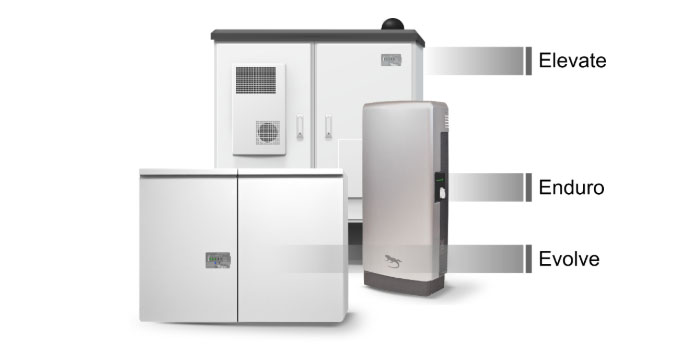
While the U.S. may not be the manufacturing powerhouse that it once was, the country is still a massive producer of a number of commodities. These products make up a good chunk of U.S. exports and, thanks to changing demand pictures in both the energy and agricultural markets, have been important contributors to the trade balance for quite some time now.
In particular, the U.S. has developed a great advantage over many nations in a few commodities; corn, natural gas and soybeans. In the case of the agricultural products, both have become impressive sources of export dollars while natural gas production threatens to disrupt the energy market by either eventually becoming a major export to power hungry markets, or by hopefully reducing crude oil imports at some point in the near future (read The 5 Best ETFs over the Past Five Years).
Clearly, these three products are increasingly important to the American economy and look to maintain their significance over the next several years at least. As a result of this, investors looking to tap into some of the more important goods for the American economy could consider taking a look at any of the following three commodity ETFs.
Corn
Thanks to growing use of biofuels and rising demand for animal feed for meat consumption, corn demand has been through the roof. World consumption increased by over 50% over roughly the last 15 years, led by huge gains in usage by China for livestock and America for ethanol.
Currently, America is still the king of corn, accounting for over one-third of the total world supply of the crop. Furthermore, the U.S. exports more in corn each year than the next three biggest exporters combined. Thanks to these factors, corn represents one of the best ways to play an American agricultural boom both via surging emerging market exports and increased usage on the home front as well.
For investors seeking to play this via ETFs, the Teucrium Corn ETF (CORN) is one of the only ways to target the potentially positive trend in this agricultural commodity. CORN currently has about $60 million (M) in assets and has expenses of about 1.49% (read Top Commodity ETFs in this Uncertain Market).
While this may seem somewhat high, investors should note that the product doesnít just roll into a new contract every month and instead uses a more dynamic process in order to hopefully mitigate contango. This includes holding the second-to-expire, third-to-expire, and the next December contract that expires (following the third-to-expire contract).
This approach, and more importantly, the sweltering heat across much of the Midwest, has helped the fund perform quite well in recent weeks. In fact, the product is now up 22% in the past month, although it is more or less flat from a year-to-date look.
Natural Gas
Although the U.S. is just the second biggest producer of natural gasótrailing Russia by just a bitóthe product is generally a local commodity that doesnít really stretch across international borders. This is generally due to the lack of cross-ocean pipelines and the relative difficulty that comes from transporting a gas quickly and efficiently across vast distances.
Due to this, pretty much all the natural gas that is produced in the U.S. stays in America, making the products that are focused on U.S. natural gas futures a great way to "buy American." Furthermore, even if new technologies open up the market to transportation or exports, America could benefit from lower oil imports or higher exports to natural gas starved markets in the Asia-Pacific region or even Europe (read Have the Natural Gas ETFs Finally Bottomed Out?).
For these investors, a look at products that hone in on futures of natural gas that is delivered to the Henry Hub, Louisiana could be the way to play the vital commodity with an American focus. Currently, there are a number of options targeting the natural gas market in ETF form, although none are as popular as the United States Natural Gas Fund (UNG).
This ETF tracks Henry Hub Natural Gas Price Index, holding front month futures for the important commodity. Fees come in at 98 basis points a year while average daily volume is quite robust at 9.9M shares a day (see Inside the Forgotten Energy ETFs).
The product has been decimated over the long term, losing a substantial amount thanks to contango and extreme weakness in natural gas prices. However, it appears as though natural gas may have bottomed out, as UNG has actually gained 19% in the past three month period.
Soybeans
The global soybean market is currently dominated by three countries; the U.S., Brazil and Argentina. Of these three, the U.S. is the largest exporter, putting out just over half of the worldís exports, followed by a 35% share for Brazil.
Currently, China is the destination for the vast majority of these exports, helping push U.S. exports of the product up by close to 81% over the past 15 year period. Given the surging demand for the crop and the limited supply of soybeans outside a few nations, soybeans could continue to be a major growth market for the U.S. for quite some time (read Top Commodity ETFs In This Uncertain Market).
For investors looking to play this product in ETF form, there is currently one option, the Teucrium Soybeans ETF (SOYB). This relatively new fund hasnít really caught on with investors as of yet, as it just has $2.4M in AUM and trades less than 10,000 shares a day on average.
Part of this could be due to the relatively high fees as the ETF charges investors 1.53% a year in expenses. However, another issue could be the relatively unknown quantity that is soybeans, the product doesnít get the same amount of press as other more well-known commodities in the agricultural space.
This is somewhat surprising as returns havenít been too bad in SOYB, because much like CORN this fund spreads out exposure in order to hopefully mitigate contango problems. Over the fundís short lifetime (it debuted in September of 2011), it has added about 1.5%, while it has gained about 11% in the past one month period.
Eric Dutram
Zacks Investment Research



























































